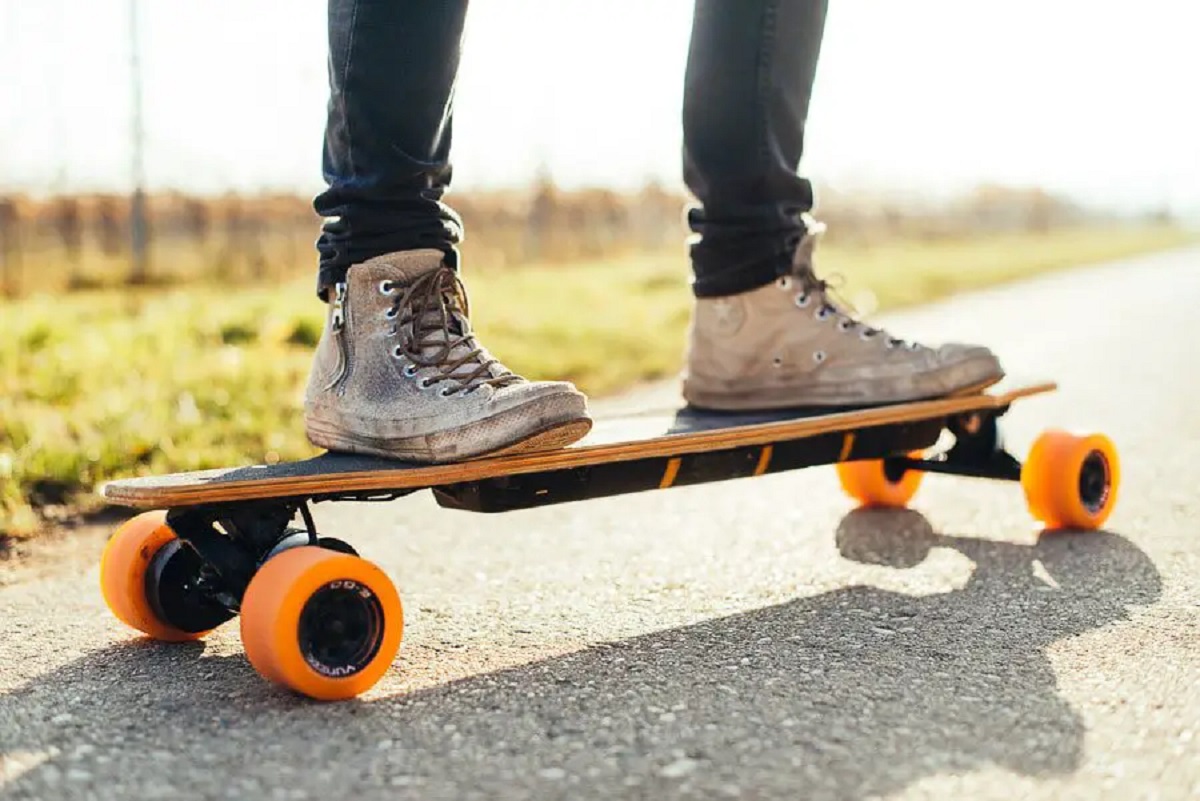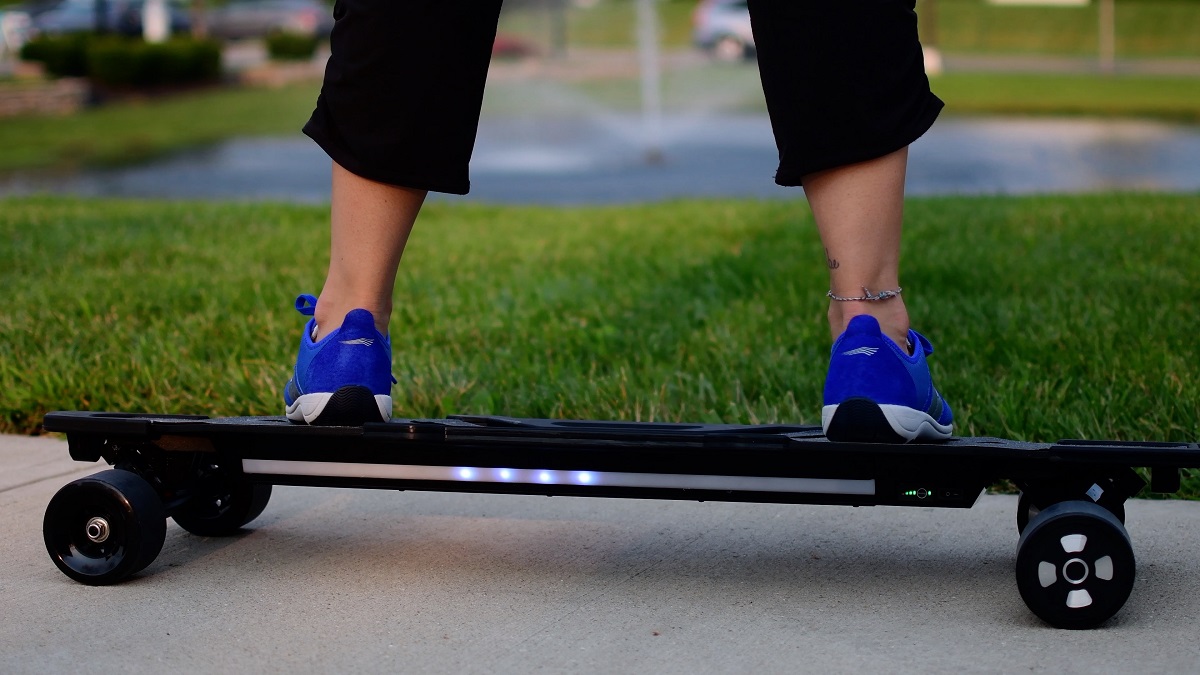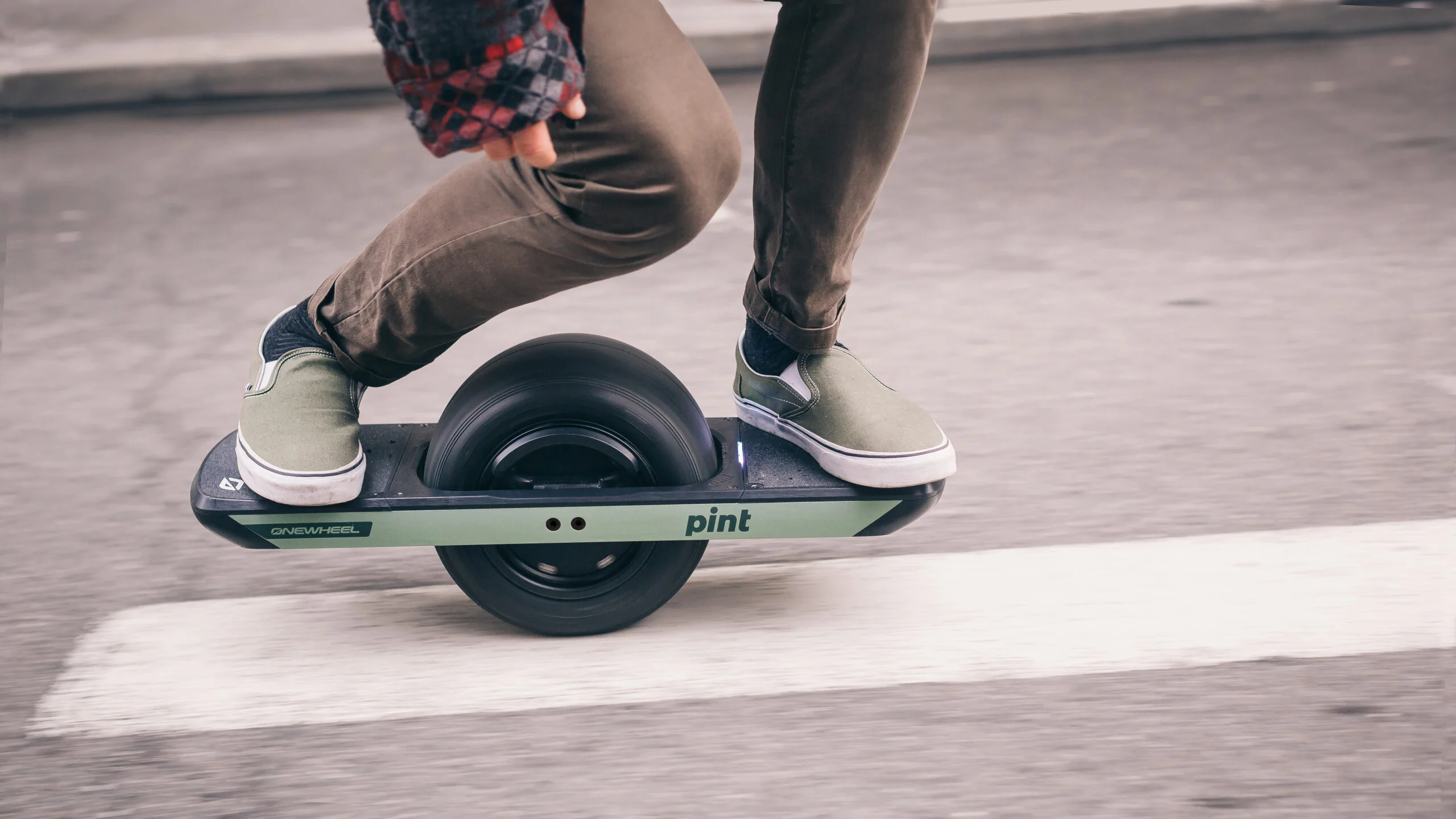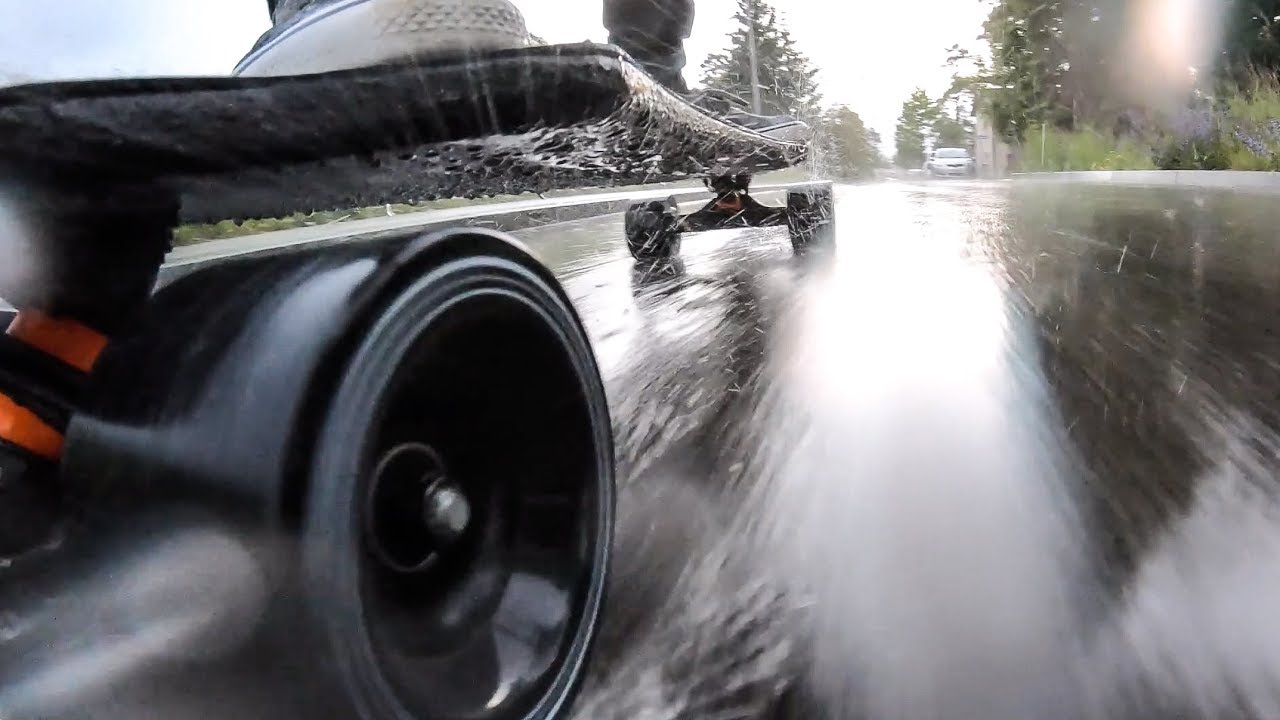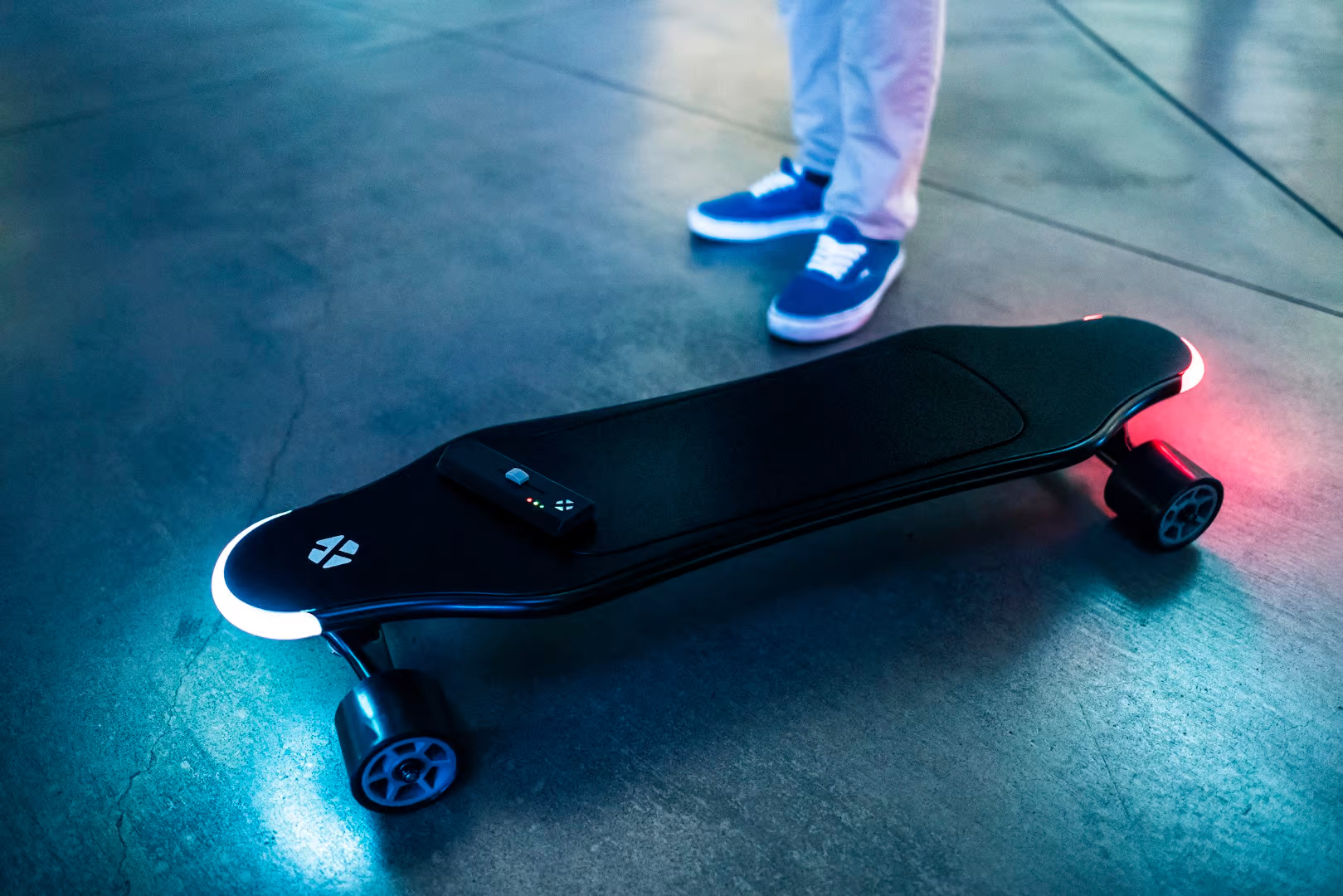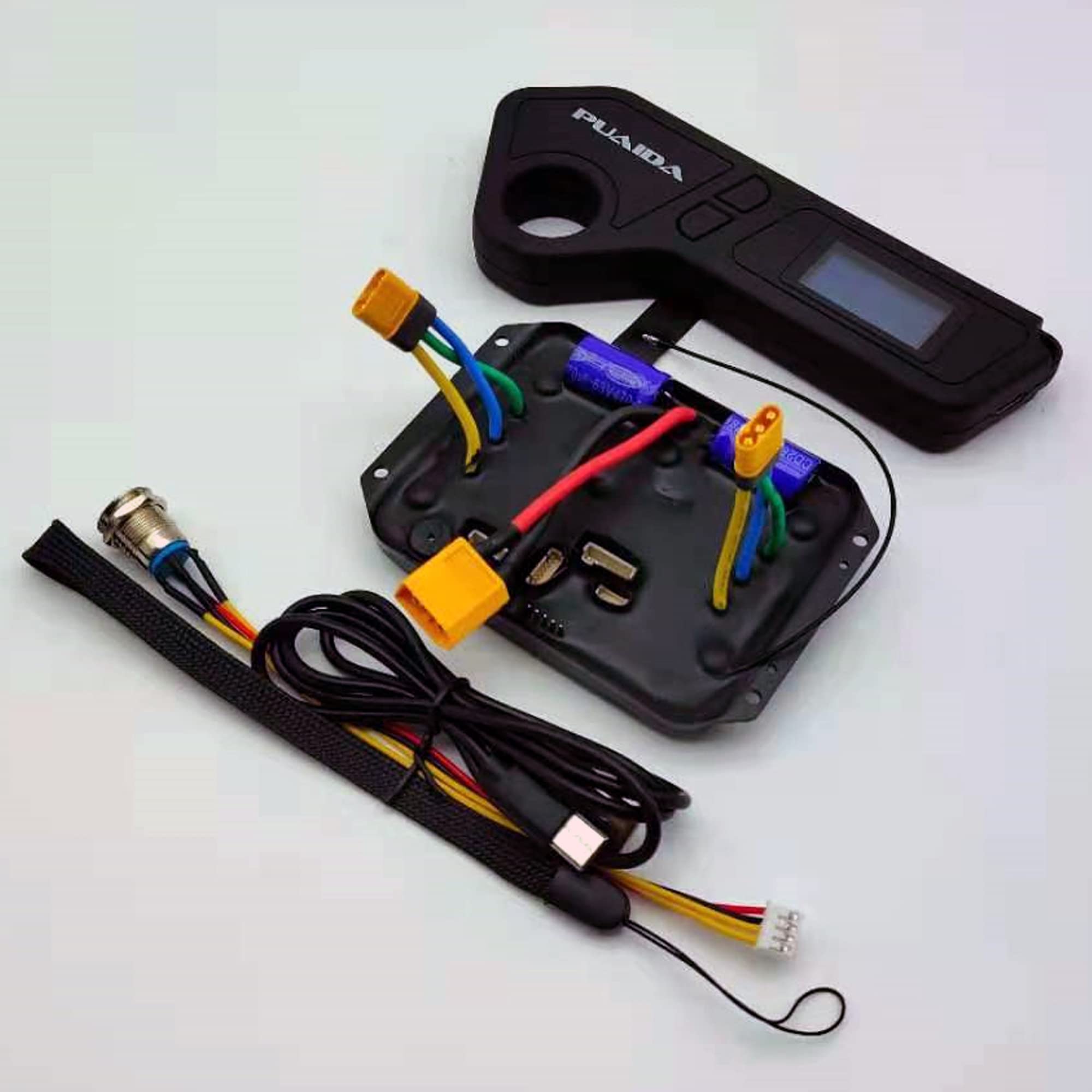Introduction
Welcome to the exciting world of electric skateboards! These innovative and eco-friendly devices have gained popularity among enthusiasts and commuters alike. With their sleek designs and powerful motors, electric skateboards offer a thrilling and convenient way to travel.
In this article, we will explore the inner workings of electric skateboards, from their history and components to how they are ridden and maintained. Whether you’re a seasoned rider or just curious about these cutting-edge devices, this guide will provide you with valuable insights into the world of electric skateboards.
Electric skateboards have revolutionized the way people commute, combining the fun and maneuverability of traditional skateboards with the efficiency and speed of electric power. By understanding how they work and how to ride them safely, you can embark on thrilling adventures and enjoy the freedom of electric mobility.
From their humble beginnings as DIY projects to the sophisticated models available today, electric skateboards have come a long way. So, let’s dive into the history, components, and riding techniques that make electric skateboards such an exciting mode of transportation.
History of Electric Skateboards
The idea of an electric skateboard dates back to the early 1970s when inventors and skateboard enthusiasts started experimenting with electric-powered prototypes. The early models were often bulky and lacked the efficiency and performance of modern electric skateboards.
During the 1990s, there was a surge in interest in electric skateboards, with several inventors and companies developing their own versions. However, the technology was still limited, and the cost of production was high, making electric skateboards inaccessible to the general public.
It wasn’t until the early 2000s that significant advancements were made in battery technology and motor efficiency, leading to the development of more practical and affordable electric skateboards. Companies like Boosted and Evolve emerged as pioneers in the industry, introducing electric skateboards that offered a smooth and exhilarating riding experience.
Today, electric skateboards have become more mainstream, with a wide range of options available to cater to different riding styles and preferences. They have also gained recognition as a sustainable alternative for short-distance commuting and recreational purposes.
The evolution of electric skateboards has been fueled by advancements in battery technology, allowing for longer ride durations and quicker charging times. Moreover, improved motor efficiency and regenerative braking systems have made electric skateboards more energy-efficient and capable of tackling different terrains.
Furthermore, advancements in wireless communication technology have enabled the development of intuitive remote controls that allow riders to effortlessly control speed and acceleration, enhancing the overall riding experience.
As the popularity of electric skateboards continues to grow, we can expect further technological advancements and innovations in the future. The industry is constantly evolving, with companies investing in research and development to improve battery life, increase power output, and enhance overall performance.
With a fascinating history behind them, electric skateboards have come a long way and have solidified their position as a fun, eco-friendly, and practical mode of transportation. So, let’s explore the components that make these electric-powered boards tick.
Components of an Electric Skateboard
An electric skateboard is made up of several key components that work together to provide power, control, and a smooth riding experience. Understanding these components is crucial for maintaining and customizing your electric skateboard. Let’s take a closer look at each component:
Electric Motor
The electric motor is the heart of an electric skateboard. It is responsible for generating the power needed to propel the board forward. Electric skateboard motors vary in size, power output, and placement. Some skateboards feature hub motors integrated into the wheels, while others have belt-driven motors mounted on the underside of the board.
Battery Pack
The battery pack is what gives an electric skateboard its power. It stores the energy used by the motor and other components. Lithium-ion batteries are commonly used due to their high energy density, lightweight, and durability. The battery pack’s capacity determines the range of the electric skateboard, and it can be charged using a standard wall outlet or specialized chargers.
ESC (Electronic Speed Controller)
The ESC, or Electronic Speed Controller, is the interface between the battery, motor, and remote control. It regulates the flow of power from the battery to the motor and allows the rider to control the speed and acceleration. The ESC also provides important safety features such as braking and protection against overcharging or overheating.
Remote Control
The remote control is how riders communicate with their electric skateboards. It wirelessly connects to the ESC, allowing for speed adjustments, acceleration, and braking. Most remote controls feature a trigger or thumb wheel that allows precise control over the skateboard’s speed. Some advanced models even offer features like reverse gear or smartphone app integration.
Regenerative Braking
Regenerative braking is a feature found in many electric skateboards. It allows the skateboard to recharge the battery while slowing down or coming to a stop. When the rider applies the brakes, the motor switches to generator mode, converting the kinetic energy of the slowing board back into electrical energy, which is then sent back to the battery.
These components work in harmony to deliver a thrilling and efficient electric skateboarding experience. With a solid understanding of their functions, you can make informed decisions about maintaining and upgrading your electric skateboard to suit your riding style.
Electric Motor
The electric motor is a crucial component of an electric skateboard, as it is responsible for providing the power and propulsion needed to move the board forward. Let’s delve into the workings of an electric motor and its significance in the performance of an electric skateboard.
Electric skateboard motors come in various types, but the two most common types are hub motors and belt-driven motors.
Hub motors are integrated into the wheels of the electric skateboard, providing a compact and streamlined design. These motors offer a quieter operation and require less maintenance since they have fewer moving parts. Hub motors also provide a smoother riding experience due to the direct drive system.
Belt-driven motors, on the other hand, are mounted underneath the skateboard and use a system of pulleys and belts to transfer power from the motor to the wheels. This design offers more flexibility in terms of motor placement and gearing options, allowing for better customization to suit different riding styles. Belt-driven motors are often favored for their higher torque and acceleration capabilities.
The power output of an electric motor is measured in terms of wattage. Higher wattage motors generally provide more torque and higher top speeds, making them suitable for riders who prefer faster and more aggressive riding experiences. Lower wattage motors, on the other hand, may be more suitable for casual riders or those who prioritize conserving battery life.
Another important factor to consider is the motor’s efficiency. The efficiency of an electric motor determines how effectively it converts electrical energy from the battery into mechanical power to propel the skateboard. More efficient motors will consume less energy, thus providing longer range and extending the battery life.
Furthermore, some electric skateboard motors offer regenerative braking capabilities. During braking or deceleration, the motor switches to generator mode and converts the kinetic energy of the slowing board into electrical energy, which is then fed back into the battery. This feature not only enhances the overall efficiency of the electric skateboard but also helps to increase the total range of the board.
Overall, the electric motor is a vital component of an electric skateboard, delivering the power and performance that riders seek. The choice between hub motors and belt-driven motors, as well as the wattage and efficiency of the motor, should be determined by the rider’s preferences and riding style. Understanding the intricacies of the electric motor will enable riders to select the right electric skateboard that suits their needs and provides an exhilarating riding experience.
Battery Pack
The battery pack is a crucial component of an electric skateboard as it provides the necessary power to propel the board and enables riders to enjoy their electric skateboarding experience. In this section, we will explore the importance of the battery pack and its role in the performance and range of an electric skateboard.
Electric skateboards typically utilize lithium-ion batteries due to their high energy density, lightweight nature, and reliable performance. These batteries are capable of storing a substantial amount of electrical energy while being compact enough to fit seamlessly into the design of the skateboard.
The capacity of the battery pack is measured in watt-hours (Wh) or ampere-hours (Ah) and determines the range of the electric skateboard. Higher capacity batteries offer more extended range, allowing riders to travel greater distances on a single charge. However, it’s essential to strike a balance between range and weight as larger capacity batteries may add bulk to the skateboard.
The charging time of the battery pack is another factor to consider. Charging times can vary depending on the battery’s capacity and the charger specifications. Some battery packs can be fully charged in a few hours, while others may require several hours for a complete charge. It is important to follow the manufacturer’s guidelines and use the recommended charger to ensure the longevity and optimal performance of the battery pack.
To maximize the lifespan of the battery pack, it is essential to practice proper charging and usage habits. Avoid fully depleting the battery pack before recharging it as this can put unnecessary stress on the cells. Instead, aim to maintain the battery’s charge between 20% and 80% capacity for optimal longevity. Additionally, extreme temperatures should be avoided as they can impact the battery’s performance and lifespan.
With advancements in battery technology, some electric skateboards now offer swappable battery packs. This feature allows riders to carry spare batteries, providing the flexibility to extend their riding sessions without needing to stop for a recharge. Swappable battery packs are especially beneficial for commuters or riders planning longer journeys.
Regenerative braking is another feature that can impact the battery pack’s efficiency. When the rider applies the brakes or decelerates, the electric motor switches to generator mode, converting some of the kinetic energy back into electrical energy and charging the battery. This process helps to extend the overall range of the electric skateboard and increase its energy efficiency.
Proper care and maintenance of the battery pack are crucial for optimum performance and longevity. Regularly inspect the battery for any signs of damage or wear and follow the manufacturer’s recommendations for storage and usage conditions. By taking proper care of the battery pack, riders can enjoy reliable power and extended range while out on their electric skateboarding adventures.
ESC (Electronic Speed Controller)
The ESC, or Electronic Speed Controller, is a vital component of an electric skateboard that plays a critical role in regulating power delivery and controlling the speed and acceleration of the board. In this section, we will explore the functions and significance of the ESC in an electric skateboard.
The ESC acts as the intermediary between the battery, motor, and the rider’s inputs through the remote control. It receives signals from the remote control and processes them to control the speed and direction of the electric skateboard. This ensures smooth and seamless acceleration and deceleration, providing riders with precise control over their board.
One of the primary functions of the ESC is to regulate the flow of power from the battery to the motor. It ensures that the motor receives the appropriate amount of electrical energy to match the desired speed set by the rider. This control allows riders to achieve the desired level of acceleration, whether it’s a gentle cruise or a quick burst of speed.
Most ESCs also offer braking capabilities. When the rider activates the brakes on the remote control, the ESC sends signals to the motor to engage regenerative braking or mechanical braking, depending on the skateboard’s configuration. This feature allows for efficient braking and adds an extra layer of control and safety to the electric skateboard.
Additionally, the ESC provides vital safety features to protect the battery, motor, and other components. It monitors the battery’s voltage levels and temperature to prevent overcharging and overheating, ensuring the longevity and reliability of the entire system. The ESC may also include protection against short circuits and overcurrent, safeguarding the electric skateboard from potential damage.
Furthermore, some advanced ESCs offer additional features such as variable speed modes, cruise control, and even smartphone app integration. Variable speed modes allow riders to adjust the maximum speed of the electric skateboard to match their comfort level or riding environment. Cruise control enables riders to maintain a steady speed without constantly holding down the throttle, while smartphone app integration provides a more customizable and interactive experience with options for fine-tuning settings and accessing ride data.
Proper setup and calibration of the ESC are essential for optimal performance. It is crucial to follow the manufacturer’s instructions for pairing the remote control, setting the speed modes, and calibrating the ESC to ensure accurate and reliable performance.
In summary, the ESC is the brain behind an electric skateboard, acting as the control center for power distribution and speed control. Its ability to regulate the flow of power, provide braking functions, and include safety features ensures a smooth and safe riding experience. Understanding the functions and capabilities of the ESC allows riders to fully harness the potential of their electric skateboards.
Remote Control
The remote control is an essential accessory that enables riders to have full control over their electric skateboard. It establishes a wireless connection with the skateboard’s Electronic Speed Controller (ESC) and allows riders to control their speed, acceleration, and braking. In this section, we will explore the importance of the remote control and its functions in enhancing the riding experience.
The remote control typically consists of two main components: a handheld device and a receiver that is mounted on the electric skateboard. The handheld device is designed to fit comfortably in the rider’s hand and is equipped with buttons, triggers, or thumb wheels that allow for intuitive control.
One of the primary functions of the remote control is to adjust the speed and acceleration of the electric skateboard. By applying pressure to the throttle control, riders can increase or decrease the speed according to their preference. This feature offers versatile control, allowing riders to smoothly accelerate or decelerate, depending on the riding conditions or terrain.
Most remote controls also feature a reverse gear function, which is especially useful for maneuvering in tight spaces or backing up. The ability to switch between forward and reverse motion adds another layer of versatility and convenience to the electric skateboard.
The remote control also plays a vital role in activating the braking system of the electric skateboard. By pressing the brake control, riders can safely slow down or come to a complete stop. Some remote controls offer adjustable braking intensity, allowing riders to fine-tune their braking preferences.
Advanced remote controls may feature additional functionalities such as speed mode selection, allowing riders to choose between different speed settings to match their skill level or desired riding experience. Some models also offer cruise control, maintaining a steady speed without the need to continuously hold the throttle, which can be particularly useful on long rides or during extended periods of cruising.
Remote controls can also enhance user convenience through smartphone app integration. Through a dedicated app, riders can access additional features, customize settings, track ride data, and even receive firmware updates. This integration allows for a more personalized and tailored riding experience.
It is important to pair the remote control with the electric skateboard’s ESC correctly and ensure a stable and reliable wireless connection. Following the manufacturer’s instructions for pairing and calibrating the remote control will ensure accurate control and prevent any potential issues.
The remote control is an integral part of the electric skateboard experience, giving riders the freedom to control their speed, acceleration, and braking with ease. It offers a user-friendly interface and intuitive controls, providing a seamless and enjoyable riding experience. Understanding the functionalities of the remote control allows riders to unlock the full potential of their electric skateboards.
Regenerative Braking
Regenerative braking is a valuable feature found in many electric skateboards that allows for efficient braking while also contributing to increased battery life. In this section, we will explore how regenerative braking works and why it is beneficial for electric skateboard riders.
Regenerative braking takes advantage of the kinetic energy generated during braking or deceleration. When the rider applies the brakes, the electric motor switches to generator mode, converting the kinetic energy of the slowing board back into electrical energy.
This electrical energy is then fed back into the battery, effectively recharging it and extending the riding range of the electric skateboard. By harnessing the energy that would have otherwise been wasted as heat during braking, regenerative braking not only helps to conserve battery power but also increases overall energy efficiency.
The implementation of regenerative braking varies depending on the electric skateboard model and the specific components involved. Some skateboards utilize only regenerative braking, while others incorporate a combination of regenerative braking and traditional mechanical brakes for added stopping power.
Regenerative braking not only contributes to longer ride durations but also reduces the wear and tear on the mechanical braking system. By relying on the regenerative aspect of braking, riders can prolong the lifespan of their brake pads or other mechanical braking components, resulting in reduced maintenance and replacement costs.
It is worth noting that the effectiveness of regenerative braking can vary based on several factors. These factors include the riding speed, battery charge level, and the amount of braking force applied by the rider. The overall terrain and surface conditions can also affect the performance of regenerative braking, as certain surfaces may provide more or less resistance for deceleration.
Furthermore, riders should be aware that regenerative braking, while efficient and effective, may not provide the same level of immediate stopping power as mechanical brakes. Therefore, it is important for riders to anticipate their stopping distances and employ a combination of both regenerative and mechanical braking systems when necessary, particularly in emergency situations or when riding downhill.
By utilizing regenerative braking, electric skateboard riders can enjoy a more efficient and eco-friendly riding experience. The ability to harness the energy generated during braking not only extends the riding range but also contributes to the overall sustainability of electric skateboarding. It allows riders to make the most of their electric skateboard’s power and enhances the overall efficiency and usability of these innovative and exciting devices.
How to Ride an Electric Skateboard
Riding an electric skateboard can be an exhilarating experience, but it’s important to approach it with the right knowledge and skills to ensure a safe and enjoyable ride. In this section, we will discuss the step-by-step process of how to ride an electric skateboard.
Step 1: Safety First
Before hopping on your electric skateboard, make sure to wear appropriate safety gear, including a helmet, knee pads, and elbow pads. It’s also crucial to find a safe, open area with smooth pavement for your first few rides.
Step 2: Familiarize Yourself with the Remote Control
Take some time to familiarize yourself with the remote control. Understand how each button or control works, particularly the throttle, brake, and any speed modes offered. Practice using the remote without stepping on the skateboard to get a feel for the controls.
Step 3: Mount the Electric Skateboard
Stand near the center of the electric skateboard, with one foot positioned perpendicular to the board and the other foot behind it, parallel to the board. Use your front foot for stability and balance.
Step 4: Start Moving
Slowly apply pressure to the throttle control on the remote control to start moving. Start with gentle acceleration to get a feel for the board’s responsiveness. Keep your body weight distributed evenly and use small adjustments in your stance to control your movements.
Step 5: Practice Turning and Maneuvering
Once you’re comfortable with riding in a straight line, practice making gradual turns by shifting your weight in the desired direction. Start with wide turns and gradually work your way up to sharper turns as you gain confidence.
Step 6: Braking and Slowing Down
When you need to decelerate or come to a stop, release pressure from the throttle control or gently apply the brake control on the remote control. If your electric skateboard supports regenerative braking, you can also use this feature to slow down while recharging the battery.
Step 7: Maintain Awareness and Ride Responsibly
Always be aware of your surroundings while riding an electric skateboard. Pay attention to obstacles, pedestrians, and traffic. It’s important to ride responsibly, follow traffic rules, and be considerate of others sharing the road or sidewalk.
Step 8: Gradually Increase Speed and Advanced Maneuvers
As you become more comfortable and experienced in riding an electric skateboard, you can gradually increase your speed and start exploring more advanced maneuvers, like carving or riding switch (with your opposite foot forward).
Step 9: Practice, Practice, Practice
The key to becoming a confident electric skateboard rider is practice. Take the time to practice regularly, honing your skills and improving your control over the board. With time and experience, you’ll become more comfortable and proficient in riding your electric skateboard.
Remember, safety always comes first. Practice in controlled environments, wear appropriate safety gear, and ride within your comfort zone. Electric skateboards provide a unique and exciting experience, but it’s essential to approach it with caution, respect, and a responsible mindset.
Maintenance Tips
Proper maintenance is essential to keep your electric skateboard in top shape and ensure its optimal performance and longevity. In this section, we will discuss some key maintenance tips to help you take care of your electric skateboard:
1. Regular Cleaning
Clean your electric skateboard regularly, especially after riding in dusty or dirty environments. Use a soft cloth or brush to remove dirt, debris, and grime from the deck, trucks, and wheels. Avoid using excessive water or harsh cleaning agents, as they can damage electrical components.
2. Check the Wheels
Inspect the wheels regularly for signs of wear and tear. Replace worn-out wheels to maintain good traction and a smooth ride. Clean the bearings regularly and lubricate them with skate bearing oil to ensure optimal performance.
3. Tighten Loose Screws
Regularly check and tighten any loose screws on your electric skateboard. Ensure that the trucks, motor mounts, and other components are securely fastened. Loose screws can affect the stability and safety of your ride.
4. Battery Care
Follow the manufacturer’s guidelines for battery care and storage. Avoid fully depleting the battery before recharging it, as this can reduce its overall lifespan. Store the battery in a cool and dry place, away from extreme temperatures and direct sunlight.
5. Belt Maintenance
If your electric skateboard has a belt-driven motor, regularly check the condition of the belts for signs of wear or damage. Replace worn-out belts promptly to prevent potential accidents or motor failure.
6. ESC Calibration
Occasionally, calibrate the Electronic Speed Controller (ESC) of your electric skateboard as per the manufacturer’s instructions. Proper calibration ensures accurate speed and acceleration control, improving the overall riding experience.
7. Tire Pressure
Check the tire pressure regularly to ensure optimal performance and a comfortable ride. Proper tire pressure helps maintain stability and control. Refer to the manufacturer’s guidelines for the recommended tire pressure.
8. Protect Against Moisture
Avoid riding your electric skateboard in heavy rain or wet conditions, as moisture can damage electrical components. If your skateboard does get wet, dry it thoroughly before storing or using it again.
9. Store Properly
When not in use, store your electric skateboard in a dry and secure place, away from direct sunlight or extreme temperatures. Protect it from dust and debris by covering it with a skateboard bag or a clean cloth.
10. Regular Check-ups
Periodically, perform a thorough check-up of your electric skateboard. Inspect all components, including the motor, battery, ESC, and remote control. Look for any signs of damage, loose connections, or unusual noises. Address any issues promptly to prevent further damage.
By following these maintenance tips, you can keep your electric skateboard in excellent condition for an extended period, ensuring that you have many enjoyable rides ahead.
Safety Precautions
While riding an electric skateboard can be an exciting experience, it’s vital to prioritize safety to prevent accidents and injuries. Here are some key safety precautions to keep in mind when riding an electric skateboard:
1. Wear Protective Gear
Always wear appropriate protective gear, including a helmet, knee pads, elbow pads, and wrist guards. These safety gears can help protect you in the event of a fall or collision.
2. Know and Follow Local Laws
Familiarize yourself with the local laws and regulations governing the use of electric skateboards in your area. Observe and follow speed limits, restrictions on riding locations, and any other specific rules set by local authorities.
3. Start Slow and Practice
If you’re new to electric skateboarding, start with slow speeds and practice in safe, open areas. Gradually increase your speed and skill level as you gain confidence and experience. Take the time to master your control and balance on the skateboard.
4. Be Alert and Aware
Stay vigilant and aware of your surroundings at all times while riding. Pay attention to road conditions, pedestrians, vehicles, and other potential hazards. Avoid distractions such as using headphones or mobile devices that can hinder your attention and response time.
5. Ride Defensively
Adopt a defensive riding style by assuming that others may not see you. Always anticipate the actions of pedestrians, cyclists, and drivers. Be prepared to react quickly and avoid potential collisions.
6. Check Equipment Before Each Ride
Before each ride, inspect your electric skateboard and its components. Check for any loose screws, damaged parts, or potential malfunctions. Ensure that the battery is adequately charged and that the remote control is functioning correctly.
7. Avoid Riding in Inclement Weather
Avoid riding your electric skateboard in wet, icy, or slippery conditions. Wet surfaces can decrease traction, making it more difficult to control the skateboard and increasing the risk of accidents. Electric components are also susceptible to water damage.
8. Use Regenerative Braking Responsibly
When using regenerative braking, be mindful of the deceleration rate and your balance. Sudden and aggressive braking can destabilize the board, potentially causing a fall. Gradually apply the brakes and be prepared to shift your weight accordingly.
9. Respect Your Skill Level
Ride within your skill level and comfort zone. Don’t attempt advanced maneuvers or ride at excessive speeds until you have gained enough experience and confidence. Push your limits gradually with practice and experience.
10. Respect Public Spaces and Others
Be respectful of public spaces, pedestrians, and other road users. Yield the right of way when necessary and adhere to traffic rules. Avoid riding in crowded areas where your speed might pose a risk to others.
By following these safety precautions, you can minimize the risk of accidents and enjoy a safe and enjoyable electric skateboard riding experience. Remember, safety should always be a top priority.
Conclusion
Electric skateboards have revolutionized the way we commute and experience the thrill of skateboarding. With their powerful motors, sleek designs, and eco-friendly features, electric skateboards offer a unique and exciting mode of transportation. In this guide, we have explored the inner workings of electric skateboards, from their history and components to how they are ridden and maintained.
From their humble beginnings as DIY projects to the sophisticated models available today, we have witnessed the evolution and advancements in electric skateboard technology. The components such as the electric motor, battery pack, ESC, and remote control work together to provide a seamless and enjoyable riding experience. Understanding these components allows riders to make informed decisions about their electric skateboard purchases and maximize the thrill and efficiency of their rides.
Moreover, we have discussed the importance of safety precautions and proper maintenance to ensure safe and long-lasting use of electric skateboards. By wearing protective gear, following local laws, and practicing responsible riding, riders can minimize risks and enhance their safety on the roads and sidewalks. Regular maintenance, including cleaning, checking the wheels, tightening screws, and caring for the battery pack, helps riders keep their electric skateboards in optimal condition for years to come.
As the popularity of electric skateboards continues to grow, we can expect further advancements and innovations in the industry. Manufacturers are constantly pushing the boundaries to develop more efficient motors, longer-lasting battery packs, and advanced electronic systems. With ongoing improvements in technology and design, electric skateboards will continue to provide riders with an exciting and sustainable mode of transportation.
So, whether you’re an adrenaline junkie seeking thrilling rides or a commuter looking for a convenient and eco-friendly way to travel, electric skateboards offer a world of possibilities. Embrace the adventure, ride responsibly, and enjoy the exhilarating experience that electric skateboards bring.







